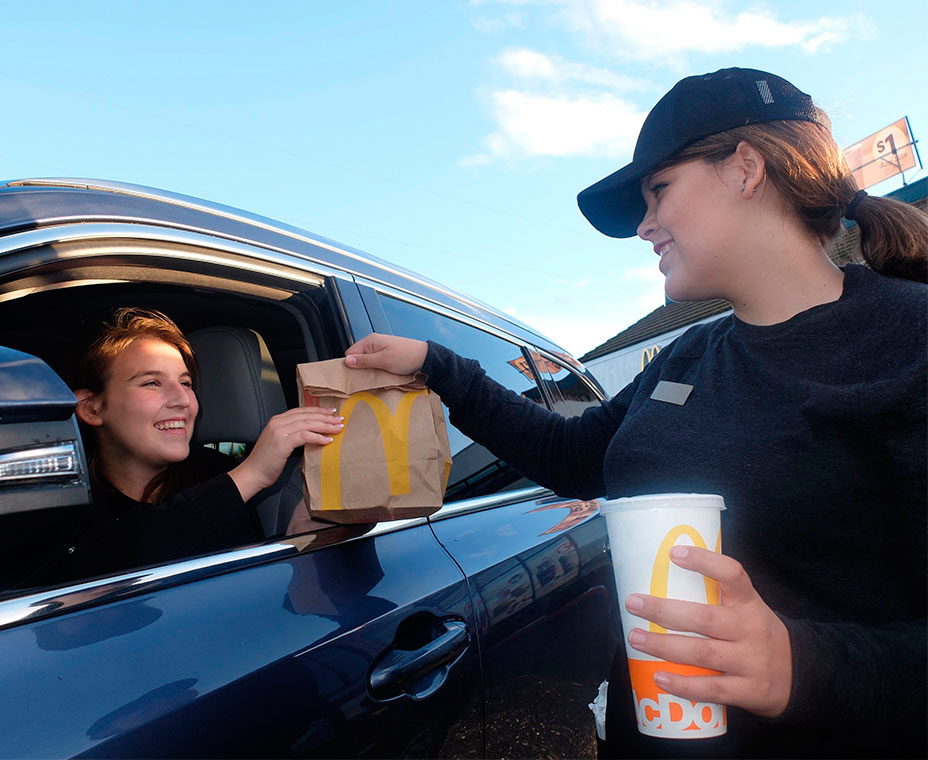Sponsored by Curbside Inc.
Estimates say that 60–70 percent of quick-service sales pass through the drive-thru window, yet today’s consumers are in search of even greater speed and convenience. As more diners move to online and mobile ordering, it’s no surprise that curbside pickup, facilitated by smart phone apps, is experiencing growth in quick service and fast casual. With giants like McDonald’s and Chick-fil-A installing to-go parking spaces, off-premise dining is becoming an even larger piece of the quick-service pie, and brands must keep up with the trend or risk falling behind.
Jaron Waldman, former head of Geo at Apple and current co-founder and CEO at Curbside—a startup that helps retailers and restaurants connect with customers via mobile channels and location technology—says that this trend is largely driven by consumers who value the immediacy that mobile options provide. Though drive thrus previously satisfied these needs, this model is not always feasible. Restaurants that operate in smaller spaces may not have the space for drive-thru lanes, and consumers are increasingly less satisfied with congestion around pickup windows. Curbside and mobile apps, however, can improve brand experience and increase sales without these challenges. The result is that chains such as McDonalds have rolled out curbside pickup widely, even at stores where drive-thru windows already exist.
“Mobile ordering is compelling for people who are time-starved and need to pick up orders on the way home,” Waldman says. “As a consumer, I can now place my order during my last meeting at work, have that food ready when I arrive at the restaurant, and put dinner on the table when I step in the door at home.”
By pairing curbside pickup with mobile apps, not only do customers receive quicker service, but Waldman says brands also report between 45 and 75 percent sales lift due to increased guest loyalty and satisfaction. Additionally, advanced location technology streamlines restaurant operations. Where low-tech curbside pickup might have created kitchen or service bottlenecks in the past, improved location technology now makes it possible for both the big players and smaller chains to enhance the off-premise dining experience.
“In the past, there has been a misconception that restaurants could put a sign up with a phone number on it so that guests could place an order when they arrived, but this model doesn’t work at scale for guests or employees,” Waldman says. “Technology eliminates guest wait times and makes curbside pickup simple for employees to execute so that no additional labor is needed.”
Curbside’s system centers on ARRIVE—a cloud-based arrival prediction technology that plugs into retailers’ mobile apps. ARRIVE tells restaurants when customers are outside the restaurant for pick up without the need for them to check in. Using updated traffic data and historical approach patterns, it also sends an alert to the store when customers are minutes away. Reliable time-based notifications allow restaurants to use these alerts as a trigger to prepare food so that it is hot when consumers arrive.
“Guests want someone to come out within a couple of minutes of arrival—and greet them with food and a smile,” Waldman says. “With this technology, employees can actually meet guests in the parking lot food-in-hand when they pull in.”
In addition to boosting satisfaction with curbside pickup customers, by serving more people outside the store, other guests are also satisfied with shorter interior and drive-thru lines. The employee experience is also improved, because fewer guests are angry when they don’t have long waits for orders or service.
As more brands introduce curbside service and guests and employees enjoy the benefits of mobile ordering, Waldman says their expectations will change, too.
“Now that McDonald’s and Starbucks are using mobile apps to implement order-ahead technology, the landscape of the industry is changing,” Waldman says. “It’s time for everyone to engage. Everyone is going to be ordering on smart phones very soon. Mobile order ahead is a tidal wave that will change everything.”
By Peggy Carouthers













